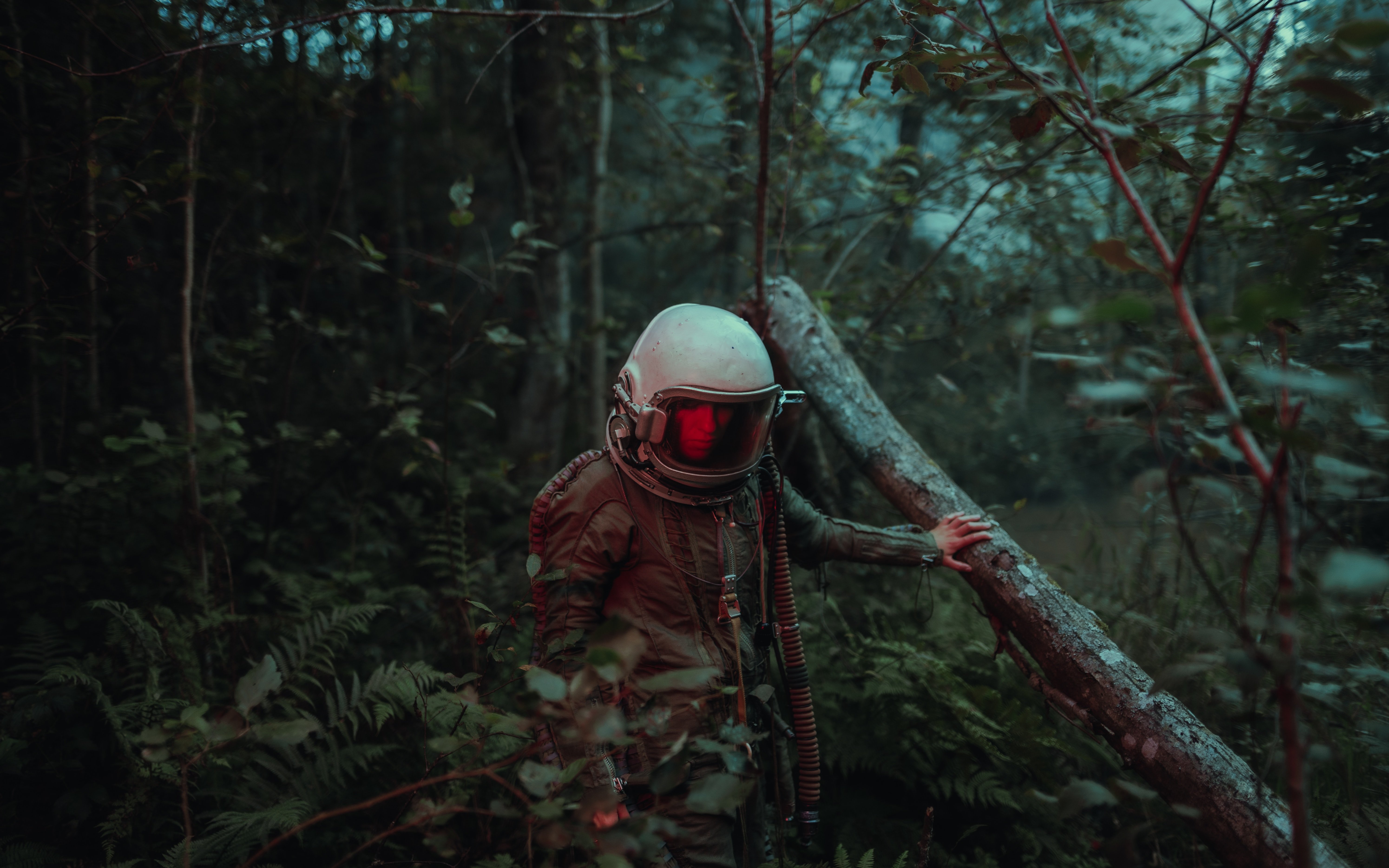Entertainment
Related articles:
Wolf 359 was a linear science fiction comedy that came out the summer of 2014 and was the first series produced by Kinda Evil Genius Productions. It debuted around what I called the “Fiction Podcast Renaissance Period'', circa the early 2010’s when nothing but independent heavy hitters were dropping one by one to uproarious praise, bustling fandoms, and successful Patreons. Wolf 359 was undeniably the front runner for the next three years–four years if you count the mini episodes and reunion special.
Wolf 359 was just that good and all around this fun, emotionally moving and well crafted experience.
For starters, Wolf 359 had the kind of audio drama miracle that only happens so often. The cast was exceptionally talented and had good chemistry, which made their vocal performances engaging and believable. The sound design was crisp and clean; the story could be an episode of Star Trek one minute and all the freaky parts of Alien the next and not skip one single beat in the process. It was a funny, intense, psychological rollercoaster that could only possibly be concocted with the combined efforts of a cast and crew that were giving their all since episode one.
Wolf 359 was simple and organic, yet packed with humor and character, almost entirely contained in a small space which made the environment equal parts homey and claustrophobic.
So what happens when a show like this ends after a successful run and satisfying conclusion, but you’ve developed an insatiable taste for this specific brand of science fiction? Well, that’s where it gets tricky.
The Cosmic Problem
In preparation for this article, I took just a little more of a deep dive that ate up a surprising amount of time. The topic had been rattling in my brain for a hot minute, but what were once careful glances around social media feeds prompted me to get a more in-depth analysis. Despite it being the main topic of an older article, cover art only acted as a minor factor here and it was really titles and summaries that were the focal point of my research
My keywords went as follows: mentions of “rag-tag crews” or some variation of that phrase, themes of introspection in isolation, “survival’, “spaceship” or “space station”, some indication that the spaceship is faulty or doomed to fail but trudges on regardless, and a statement clarifying that the spaceship has no determined destination and acts as a backdrop for the story without any pesky rest stops, or it’s entirely stationary (which I’ve realized may as well be the same thing).
For about a week I was browsing podcast hosting websites, entering my aforementioned keywords into Google, and found the occasional “Podcasts Like Wolf 359” list. My research was as thorough as it could get and gave me a whopping total of thirteen shows.
Now that may not sound like a lot, but as someone who plunges the depths of Spotify and Podchaser for a living, trying to find new audio dramas or hidden gems to talk about, that’s a concerning amount of shows to skip over completely. If I tried to compile all my findings on a single list with original descriptions, I’d be stumped by the third entry (and that’s if I strictly go in alphabetical order).
Speaking realistically, I’m not going to have time to listen to every podcast ever but even though my line of work essentially involves critiquing free-to-access indie projects, there’s a pressure I feel to give everything a fair shake. But sooner or later, I have to make time for the stories that I know will inspire conversation, not dive into a random roulette of chance because I’m merely hopeful it’ll be a new or original take on the same premise. Finding shows that are too similar in too many ways has allowed me to filter out those options much more easily, and right now the “like Wolf 359 but” brand of podcast is something I’ve been better off avoiding.
And yet, the question still stands: does it even have to be in space?
Now, there’s nothing inherently wrong with having a show kind of like Wolf 359. There’s no trademark to tarnish–even Urbina in my interview with him way back in 2016 credits Farscape as a direct line of inspiration. It’s just an idea so flexible and so easily doable, that what feels like just about everyone has taken a crack at it.
A dysfunctional space crew science fiction show can mean Firefly to one person and Cowboy Bebop to another, two incredibly different takes on the genre right down to their country of origin, runtime, medium of entertainment, and year. But in the realm of audio drama, the words “dysfunctional crew in a spaceship” can spark several titles that inevitably overlap with one another and it becomes a guessing game of what specific details set them apart. Maybe they do get off the ship and explore planets, maybe it was actually a simulation, maybe this one has a weirdly concerning amount of human on alien coitus–I wouldn’t know because I honestly couldn’t bring myself to listen to more than a few episodes, if I started the podcast at all.
If I were to cut a snippet of Star Trek and merge it with the 2005 film rendition of The Hitchhiker's Guide to the Galaxy, someone would definitely notice, but this specific brand of audio drama has become so interchangeable that the crucial differences become so deeply hidden in the text that it’s often not worth the trouble.
The Rich Variety of Science Fiction
The best piece of writing advice I’ve gotten in recent years is to enjoy the biggest variety of media you can possibly find. Fiction authors should read nonfiction books, soap opera fans should play horror games, graphic designers should watch video essays about the evolution of film–if we only ever indulge one type of media, that’s the only type of media we’ll be able to make. If your realm of creativity is limited to “being like Wolf 359”, then you need to listen to something else besides Wolf 359.
Lately, it seems like everyone wants to be The Martian, but no one wants to be The Fifth Element or the next Valerian or, God forbid, Jupiter Ascending, which personally bothers me because science fiction has always been such an abundant playing field ripe with story potential.
I personally love sci-fi that treats space as a blank canvas that can be rife with any number of wacky, fantastical potential. EOS 10 and Inkwrym still have some elements of the “dysfunctional found family”, but use the space backdrop to offer a futuristic take on a hospital and a fashion empire.
So instead of opting for the phrase “like Wolf 359 but”, I’m forced to do some thinking when it comes to describing them: EOS 10 is a pretty compelling medical drama with the humor and pacing of a sitcom. Inkwyrm feels like a sci-fi take of The Devil Wears Prada or Ugly Betty.
StarTripper!! is an easygoing space comedy road-trip with a magnetic protagonist that reminds me of Wander Over Yonder way before Firefly even comes to mind. THE INFINITE NOW, an experimental, short-form collection of space transmissions that honestly flourished from its lack of a linear structure, is undeniably sci-fi but also undeniably its own weird, independent passion project. Perhaps my love of SAYER directly contributes to how much I love the Portal games.
Even Urbina in my review with him heavily credits 1994’s teen drama My So-Called Life as an inspiration for Wolf 359, which couldn’t be more different than the show is inspired.
It’s that combination of attributes that gives the show a little more meat on its bones, a very distinct identity that traces back to a variety of inspirations. Even if those similarities are pure coincidence, that still shows implications of a broader scope, of people who like to merge genres or pay homage to one.
There can be a lot of power behind just a few words that differentiate one space show from that space show and above all, you never want to be another space show.
Space Has Become Everyman’s Land
I’m going to be completely honest: I’m starting to find shows that take place exclusively inside of a spacecraft/space station to be the slightest bit boring, but namely from an audio-visual standpoint.
Just about any show I can think about with this setting has a few go-tos:
- rickety, somewhat out of date machinery
- loudly clacking keyboards
- handheld tape recorders for the occasional framing device
- small windows with big views of starry horizons while lounging around in baggy jumpsuits and heavy duty lace up boots
- bad food and shitty living conditions that become cozy by sheer sentimentality
Not that every show has these details, and not that they’re inherently bad, just that one inevitably follows the other. Because cramped steel decks are a necessity and giant blankets of stars on a blank void may as well be the wallpaper that comes with your new iPhone.
Like the shows I mentioned above, there’s a lot more room to give a setting some life when it’s not isolated in one location, or at least not a location we’ve seen a million times over. Once again, let’s look at EOS 10, which asks: How would a hospital in space sound and operate? Is it really high tech with all this cutting edge equipment or relatively standard but with aliens?
These are the key world-building opportunities that give a setting its life and distinct identity. You’ve seen one spaceship, you’ve seen them all, but a space trailer park might be worth a look.
Who says it even has to be a traditional space crew – how about a group of wedding planners who hop from planet to planet organizing the perfect weddings for their clients? Or space food truck operated by a human trying to share the joys of earth food with aliens, or a tour guide narrating a space cruise through the Milky Way, or a story about two competing space home realtors with belligerent sexual tension, or drug dealers that sell stardust.
I know plenty about “a show in space”, but a crime thriller in space? A summer camp slasher b-movie in space? Glee in space?
And yet the question still stands: does it even have to be in space?

Breaking a Routine of Redundancy
The audio drama community is suffering from a major sci-fi surplus the likes of which I’ve never seen.
And I feel that there’s just so much more ground we could be covering (pun very much intended): sprawling cities, the comforts of a childhood home, cozy cottages and farms, the unassuming suburbs, office buildings, college, high school, the mall, a grocery store, a coffee shop, a restaurant, a story out at sea–these all come with such unique assets that can greatly impact the music, sound design, and general vibe.
Lately it’s not just been intriguing settings, but the truly off-the-wall plots that’s been piquing my interest lately. I’ve been getting more and more invested in short-form, freestyle work like Community Cat News and anthology collections like Obsidian and PodCube. And the incredibly specific pitches like Two Flat Earthers Kidnap a Freemason and Who Killed Avril Lavigne? are the stuff of a conspiracy theorist's wildest dreams.
The Godshead Incidental enthralled me not just with its unique concept, but with sprawling city life and distinctly modern finesse meshed with an American Gods brand of magic realism. And now I can’t imagine the show without images of towering buildings, busy highways, splashes of color on geometric backgrounds like the base of a mod-chic style dress.
Only some of these details are supplied in the show but it’s easy for brains to fill in the cracks and flesh out a truly unique environment. The same could be said for Greater Boston, albeit with a bit more of a coffee smell and more underground subways.
Then there are some shows that still have small settings, and yet every little detail feels micromanaged to fill out their audio Pinterest board. Brimstone Valley Mall is quite literally a story during the nineties about demons from hell who want to start a rock band in between working their part-time mall jobs. Those words alone must brush up against each other at least once in the headspace of the average Hot Topic employee (at least the ones from the 2000’s).
Who Killed Avril Lavigne? has MTV era punk rock etched into its DNA like the smudged autograph on a CD. I found myself incredibly charmed by the slice of life, workplace comedy What Can I Get Started For You? that is so confident in their casual atmosphere.
And while none of these shows are perfect–nothing is–they held my attention from just the title and description alone. I didn’t have to check off buzzwords from the Spotify synopsis because the summary of Fawx & Stallion still manages to be marginally different from Victoriocity despite having some similar themes.
This sci-fi overflow has only pushed me more into the shows that have something a little more bombastic, bold, weird and innovative to share. I’ve been looking for shows that stand for everything that audio drama was deliberately built on without the clutches of corporate marketing and focus testing to worry about. To see so many audio dramas, old and new, hopping into the bandwagon so willingly without the orders of an ominous executive suit telling them to follow specific trends and adhere to certain tropes for certain audiences, proves that this kind of mindset can happen to anyone. Not that these creations can’t be concocted with love but they also need to be made with ambition, with a sort of fearlessness to be niche, esoteric even. The second we start to fear our own creativity is when we’ve failed as creatives.
I’m Not Mad, Just Disappointed
I’ve been recently binge watching the video archive of YouTube essayist Jacob Geller. And though Gellar’s usual topic of choice is about immersive video game narratives, as I was checking out his video from May 2020, “Bad Graphics”, there was a line that really spoke to me:
“Every city doesn’t need a variation on a Guggenheim to be prestigious, but the only way to break out of that mindset is to just start doing it,” says Gellar by the 15:56 timestamp. “Use all that processing power, all those shaders and pixels and teraflops to do something other than pores on a sad man’s skin. Show us all the things we don’t even know are possible because we’ve been so hyperfocused on one definition of “good.”
Even if audio drama is currently an indie market, it doesn’t mean it can’t fall into the same trappings that make other assets of entertainment in our life samey and droll.
Now this does echo a few points I made in a past article where I shared my gripes about horror podcasts and allow me to clarify: this isn’t meant to dissuade people from the science fiction genre, just to utilize it better. I don’t want to convince people to not make art, just to make memorable art.
I only ever voice these concerns because I want the creative space of audio drama to improve and grow beyond the infinite loop of “quirky space crew with hidden emotional trauma acts silly on rinky-dink space station” shouldered next to “dreary forest town occult mystery” that’s roommates with “single narrator lists off supernatural horror scenarios with an off-puttingly nonchalant tone of voice.” To be so enamored by our own minute list of differences is the first step to becoming complacent in repetition not just with our art, but everyone else’s art.
And I’m sure you’ve all seen it: The Welcome to Night Vales and Kings Fall AMs, the many reels of The Black Tapes, the multitude of supernatural archivists that have suddenly sprung up from the foreground in the past few years–”the space station story” is just one of many cases.
And much like Gellar says towards the conclusion of his video, I do love seeing the perfectly rendered pores of a motion captured A-list actor traversing a fully realized open world the same way I like anything that’s pretty and obviously made with just as much love as it was time–I love Wolf 359, but I’ve already listened to Wolf 359.

